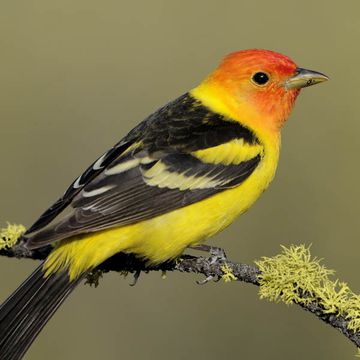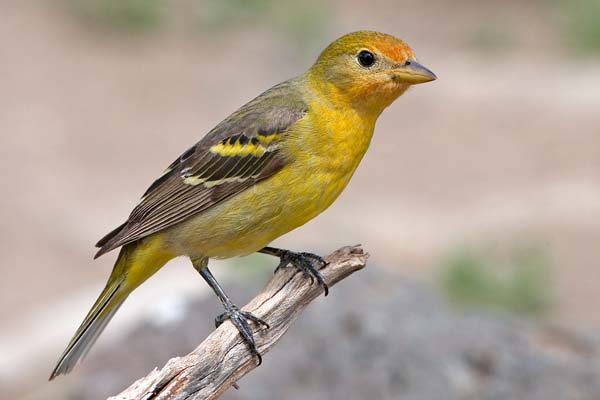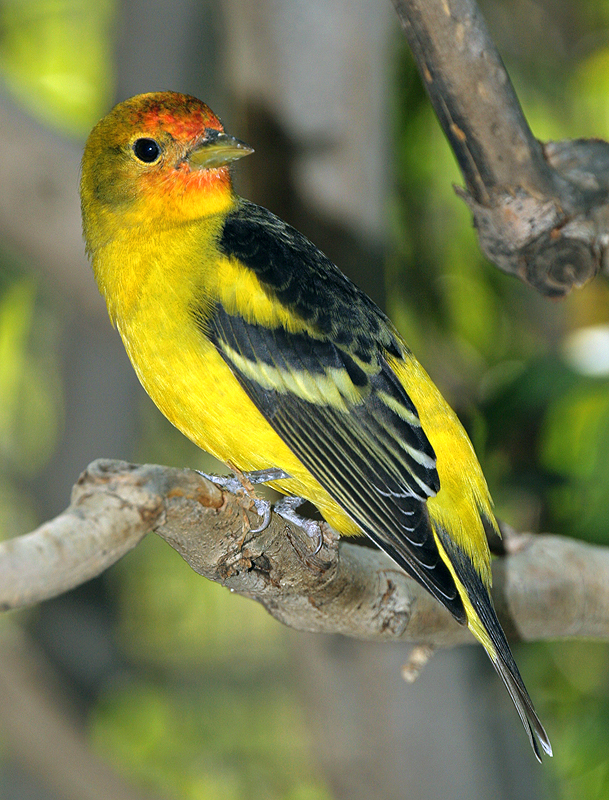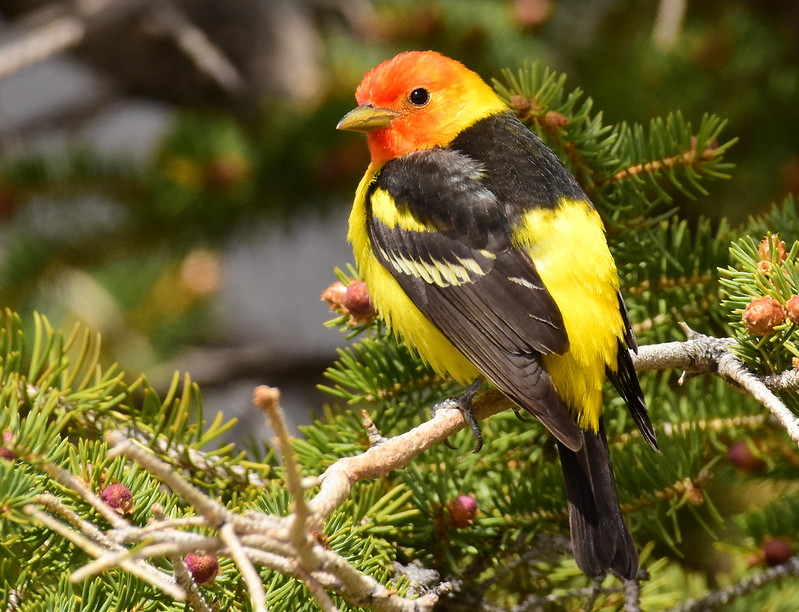An intense-looking bird that burns like a flame with his orange-red head, brilliant yellow body, contrasting perfectly with jet-black wings.
MEET THE WESTERN TANAGER
The western tanager (Piranga ludoviciana), is a medium-sized American songbird formerly in the tanager family. Adult males have a pointed bill, a yellow belly, and light yellow wing bars. He also has a bright red face and yellow nape, shoulder, and rump. His upper back, wings, and tail are black.

Females have a yellowish head with an olive back, dark wings, and tail.
The breeding range of this bird is from southeastern Alaska south to northern Baja California into Mexico.

Their range then extends east into western Texas and north into central New Mexico, central Colorado, northwest Nebraska, and areas of western South Dakota into southern Northwest Territories, Canada.
The western tanager’s wintering range stretches from central Costa Rica north through Nicaragua, Honduras, El Salvador, and Guatemala To southern Baja California Sur and extreme southeastern Sonora in western Mexico down into southern Tamaulipas in northeastern Mexico.

These birds prefer to live in or near open conifer or mixed forests. Further north in spruce, fir, pine, aspen, rarely in lower elevation woods, containing mostly oak.

Western Tanagers dine mostly on insects, including wasps, bees, ants, beets, grasshoppers, termites, and cicadas. They eat berries too, like mulberries and elderberries as well as fruit too.
During the breeding season, a nest is built usually in a coniferous tree, such as pine or fir. The nest is usually placed in a fork or horizontal branch about 15 – 65 feet above the ground. The nest is built with twigs, grass, rootlets, lined with animal hair and fine rootlets. Three – five eggs are laid within which are incubated by the female for around 13 days.

Both parents bring food to the young who leave the nest after about 2 weeks.
Due to this species’ very large range, it does not approach the thresholds for Vulnerable under the range size criteria set by the IUCN.

Source: https://onebigbirdcage.com/articles/a-flaming-head-full-of-fiery-orange-and-yellow-means-this-bird-burns-like-a-feathery-fireball-especially-in-spring/?fbclid=IwAR1P6Oloa8ifdZN2e6vUnjRcACWzuH47JKE1CaRExAw2bZFwNCZ2RLj8Fe0









